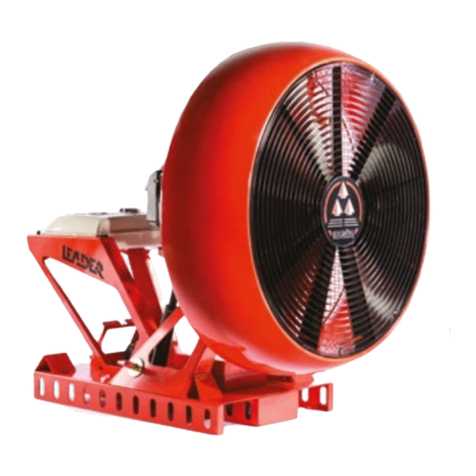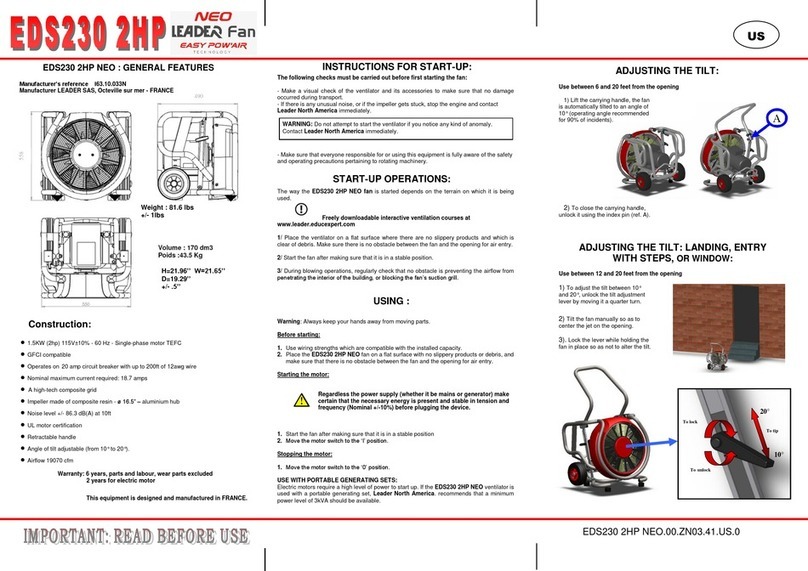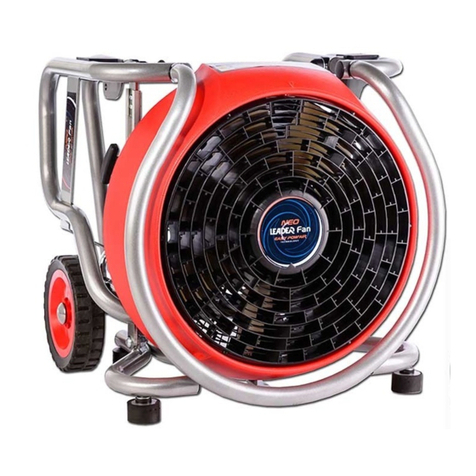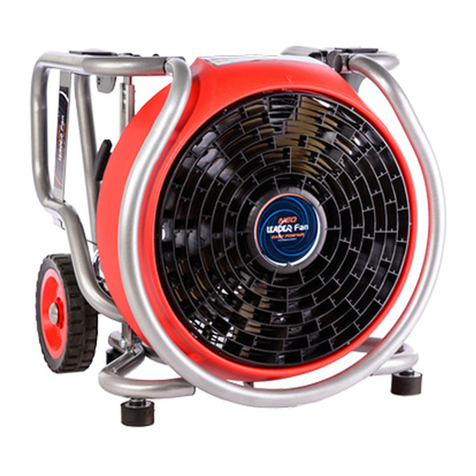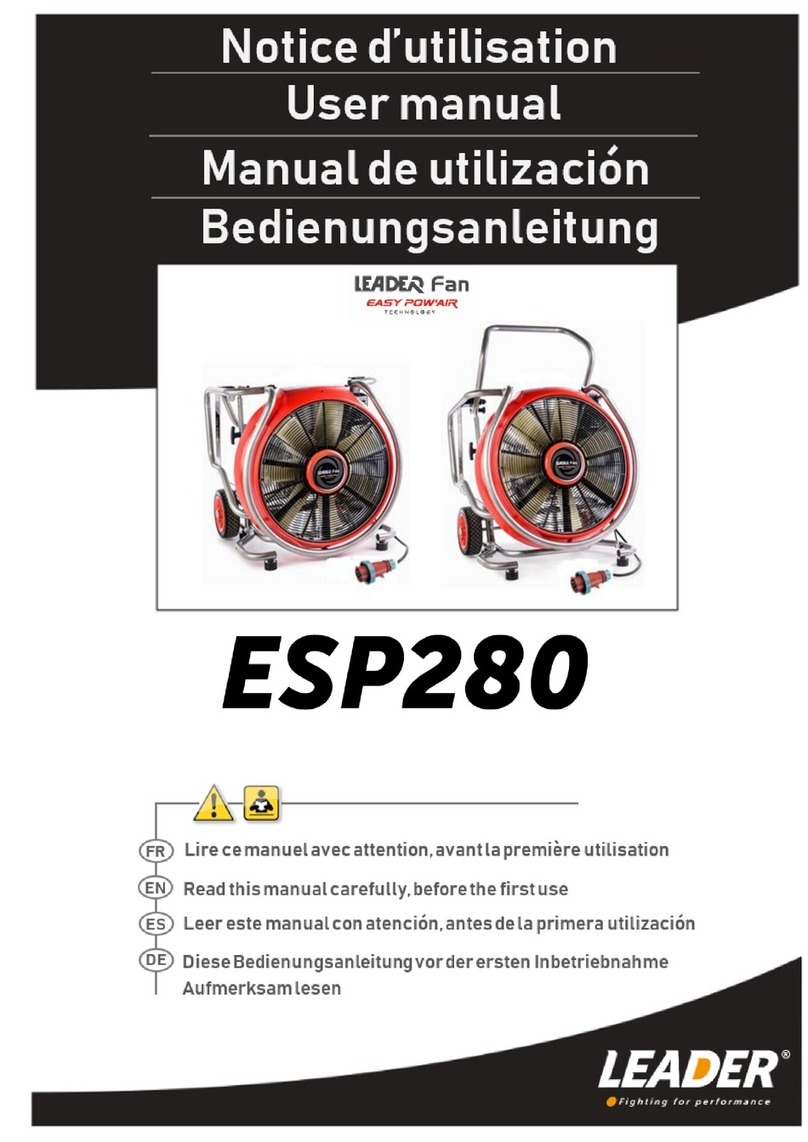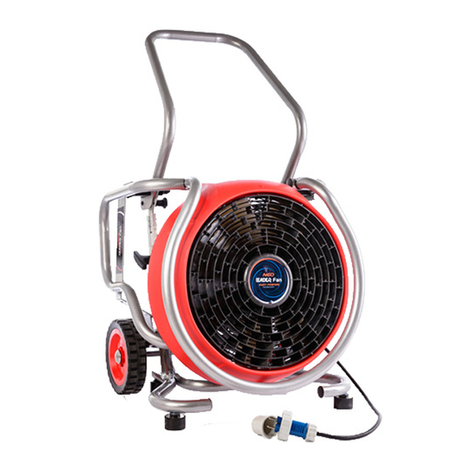4
1INTRODUCTION
This booklet has been produced to help you use and install the EASY 4000 ventilators safely.
The instructions for use and maintenance must be followed to prevent any incidents.
To make improvements to this booklet, LEADER, welcomes your suggestions. Do not hesitate to let us know.
2SAFETY ADVICE
•This equipment is manufactured in compliance with EC directives. Its use is reserved for firefighting
professionals only.
•Read the whole of this manual and the instructions for use before commissioning and using the
equipment.
•Keep fingers and hands away from the turbine and the moving parts.
•Only have this ventilator operated and repaired by qualified, trained personnel.
•Do not start the motor if the blades or the casing show signs of alterations.
•Never move the ventilator while it is operating.
•Never change the angle or the elevation or the rotation when the ventilator is at full speed.
•Always replace a defective part by an original part supplied by LEADER.
•Do not dismantle before having disconnected the battery, pushed down the emergency stop and cut the
contact.
•After a maintenance operation, check that all tools that were used have been retrieved.
•Blower ventilators must not be used in explosive atmospheres.
•Do not stand in the ventilator discharge zone (risk of projections).
•Keep out of the reach of children.
•Wear protective goggles, gloves and a soundproof helmet when using the ventilator.
•Do not wear too loose clothes that could become entangled in the ventilator.
•Never authorise anyone to use a ventilator without having supplied the necessary instructions.
•Start the ventilator after having made sure it is in a stable position, that the wheel blocks are installed
and that the trailer brake is on.
•Do not drive with the elevation deployed.
•When used in extraction the EASY4000 must be positioned away from the fireplace and must not be
exposed to temperatures above 60 ° C (140°F).
•The air filters must not be clogged (see §5.8).
•Use only the accessories provided and validate by LEADER.






